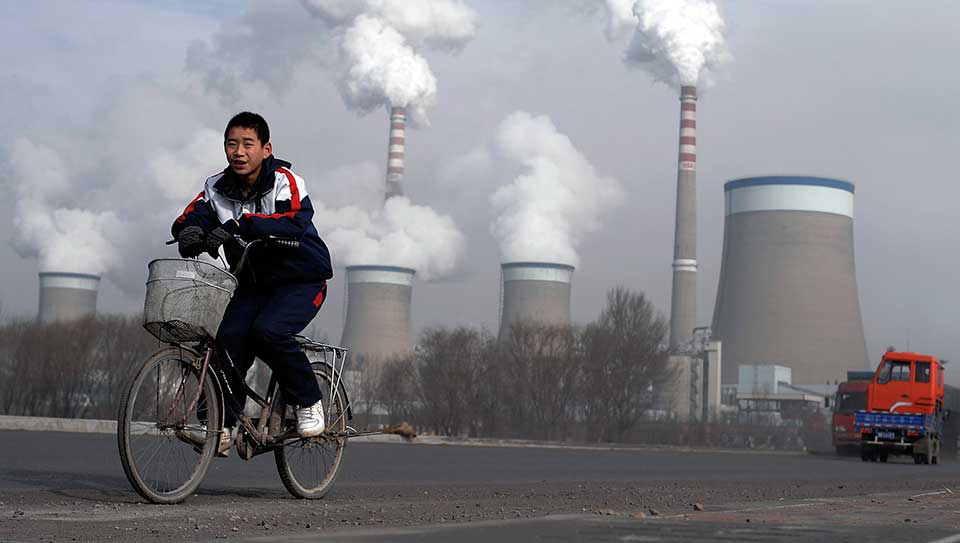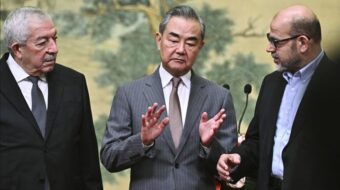
The Earth just experienced its warmest January in recorded history. That, on top of the fact that 2023 was the warmest year since measurements began in 1850. It was also the first time that temperatures averaged 1.5 degrees C (2.7 degrees F) above the average before the onset of industrialization. In the words of climatologist Richard Betts, “1.5C is now regarded as the level at which climate change risks really start to become potentially unacceptably severe.”
There have been significant agreements among the international community to tackle the issues brought about by climate change; these include the Kyoto Protocols, the Paris Agreement, and recently at the 2023 UN Climate Summit in Dubai.
Yet, people still point fingers at certain countries and blame them for supposedly not doing enough to solve the problem. No country is on the receiving end of such accusations more often than China.
Critics allude to the fact that China produces 12.7 billion metric tons of emissions per year, while the United States produces 5.9 billion. The Council of Foreign Relations (CFR) noted that in 2020 “China built over three times more new coal-power capacity than the rest of the world combined,” citing the Global Energy Monitor and the Center for Research on Energy and Clean Air.
The CFR also claimed “China’s carbon emissions threaten global efforts to fight climate change” and that its “broader environmental degradation endangers economic growth, public health, and government legitimacy. Are Beijing’s policies enough?”
And none other than that renowned expert on climate change Nikki Haley chimed in, “Is climate change real? Yes, it is,” she said. “But if you want to go and really change the environment, then we need to start telling China and India that they have to lower their emissions. That’s what our problem is.”
To be fair, however, many critics point out:
- Since China has four times the population of the United States, per capita consumption of energy in China is 10.1 tons annually, compared to 17.6 in the United States; and
- Since 1850, the United States has emitted 509 billion tons of pollutants; China 284.
Yet, all of this tells only part of the story. Lost, for the most part, in all these reports and statements are the efforts of China to address its carbon problems. In recent weeks, Carbon Briefs, a British website, has published two articles on China’s transition to clean energy. What these articles describe is a government making important strides in the production and use of alternative energy.
The “clean-energy industry drives China growth in 2023,” the articles declare. Among the sectors studied were low-carbon power, grids, energy storage, electric vehicles (EVs), and railways. In total, they added $1.6 trillion to China’s economy in 2023, larger than any other sector.
Most notably, this growth was driven by what is called the “new three”: solar power, EVs, and batteries. The $860 billion investment in these fields was 40% higher than in 2022 and nearly equaled the worldwide investment in fossil fuels.
In 2023, the clean-energy sectors accounted for 40% of the growth of China’s GDP. Without these industries, it is estimated that the country’s GDP growth would have been only 3% instead of the 5.2% it achieved. “This means clean energy accounted for 9.0% of China’s GDP in 2023, up from 7.2% in 2022.”
As one can imagine, China leads the world in the production of these three areas, as well as in wind power.
Solar—“China’s solar prowess is staggering,” according to one analysis. In 2023, the country had a capacity of 430 gigawatts (GW) of solar power, more than three times that of the United States (142 GW) and more than the next four countries combined. Electric vehicles—In 2023, China produced 9.6 million vehicles, while the number in the United States was around 1.4 million.
Batteries—China produces more than half of the world’s electric batteries. In the words of one writer, “China is rapidly scaling up electricity storage capacity. This has the potential to significantly reduce China’s reliance on coal- and gas-fired power plants to meet peaks in electricity demand and to facilitate the integration of larger amounts of variable wind and solar power into the grid.”
Wind—China produced nearly twice the amount of wind-driven energy as the United States. Or put another way, China’s output was greater than that of the next five countries added together.
Reading all of these numbers can be overwhelming, but one thing is clear, China is committed to transitioning to a clean-energy economy in a way unequalled by any other country. This commitment was clearly stated on Dec. 27, 2023, when the State Council and the Central Committee of the Communist Party of China issued a document, “Beautiful China.”
In it, President Xi Jinping said, “Building a Beautiful China is an important goal for building a modern socialist country.” The roadmap was clearly laid out. The country expects to reach peak carbon emissions in 2030 and carbon neutrality by 2060.
As a side note, one may ask, why does China have so many coal-fired production facilities and continue to build new ones? It must be remembered that when China undertook its massive industrialization program after the establishment of the People’s Republic in 1949 and then instituted its economic reforms in 1978, the most established forms of energy production on the planet were based on fossil fuels. It is not possible to completely switch gears in only a few years.
The transition to a clean energy economy is a problem that affects people everywhere. The only way the nations of the world can make this change is through strong unified action and a commitment to a new way to power the world of tomorrow.
It is clear that China is doing its part. It is imperative that every country—together and wholeheartedly—do all in its power to complete the job.












Comments